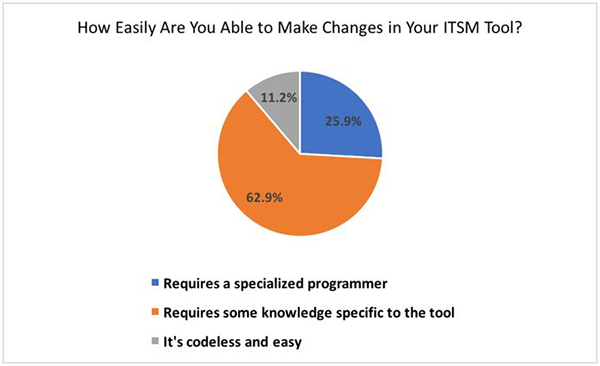Date Published October 11, 2017 - Last Updated December 6, 2017
Early in your Enterprise Service Management (ESM) strategy, you need to assess the capabilities of both your tool and your team to provide the requisite service management to the areas of your business that are getting aboard the ESM train. The tool needs to be flexible and the interface easily customized so that the terms and options displayed to the customers and users in each business area make sense to them. It’s one thing for IT to use the appropriate terminology for other business units; it’s another to have that terminology used and displayed within the tool itself. (I have seen a few remarkable examples of doing this well.)
One of the most obvious and useful places your service management tool can support and enable ESM is in the service request catalog. For excellent advice and insight on this specific topic, see the article series by Phyllis Drucker.
Having one destination for requests is one thing, but having those requests displayed in the appropriate business language and then assigned to the correct units and workflows is equally important. The positive impact of ESM will not be felt if there are manual processes around assignment and fulfillment tasks. In fact, every manual process needed will detract from the effectiveness of ESM and decrease efficiencies.
Every manual process needed will detract from the effectiveness of ESM.

Of course, to accomplish these things, your team will need to have the appropriate skillset, or you will need to bring in outside help. Unfortunately, it is not especially easy to make changes in most service management tools and/or suites. According to HDI research only about 11 percent of organizations have a tool that is “codeless and easy” to modify.

In more than one-quarter of organizations, developer intervention is required, and in almost two-thirds, someone needs to have special skills in the tool itself.
Add to this the high probability that you will be using APIs to allow tools to talk to one another and, even more likely, getting into some extensive database or data warehouse work to make the whole system reach the optimum efficiency.
Even when focusing on the technical aspects of ESM, it’s easy to see why the buy-in must come from as high in the organization as possible, and the organizational changes required will be large, difficult, and fundamental. If you haven’t read the earlier post in this series on Assessing Your Need for Cultural Change, you should do so.
The fruits of real Enterprise Service Management will come to your organization only if:
- It is approached as a true organizational shift, not a project
- It starts with people, not tools
- You can both articulate and demonstrate the benefits of service management
- You pay attention to the needs of other business units
- You really do have the right tools and skills to make it all work
It’s not as easy as taking a hacksaw to the ITSM sign and removing the “IT” from it. IT has a great opportunity to lead and show its expertise, but it must be done appropriately.
 Roy Atkinson is one of the top influencers in the service and support industry. His blogs, presentations, research reports, white papers, keynotes, and webinars have gained him an international reputation. In his role as senior writer/analyst, he acts as HDI's in-house subject matter expert, bringing his years of experience to the community. He holds a master’s certificate in advanced management strategy from Tulane University’s Freeman School of Business, and he is a certified HDI Support Center Manager. Follow him on Twitter @HDI_Analyst and @RoyAtkinson.
Roy Atkinson is one of the top influencers in the service and support industry. His blogs, presentations, research reports, white papers, keynotes, and webinars have gained him an international reputation. In his role as senior writer/analyst, he acts as HDI's in-house subject matter expert, bringing his years of experience to the community. He holds a master’s certificate in advanced management strategy from Tulane University’s Freeman School of Business, and he is a certified HDI Support Center Manager. Follow him on Twitter @HDI_Analyst and @RoyAtkinson.